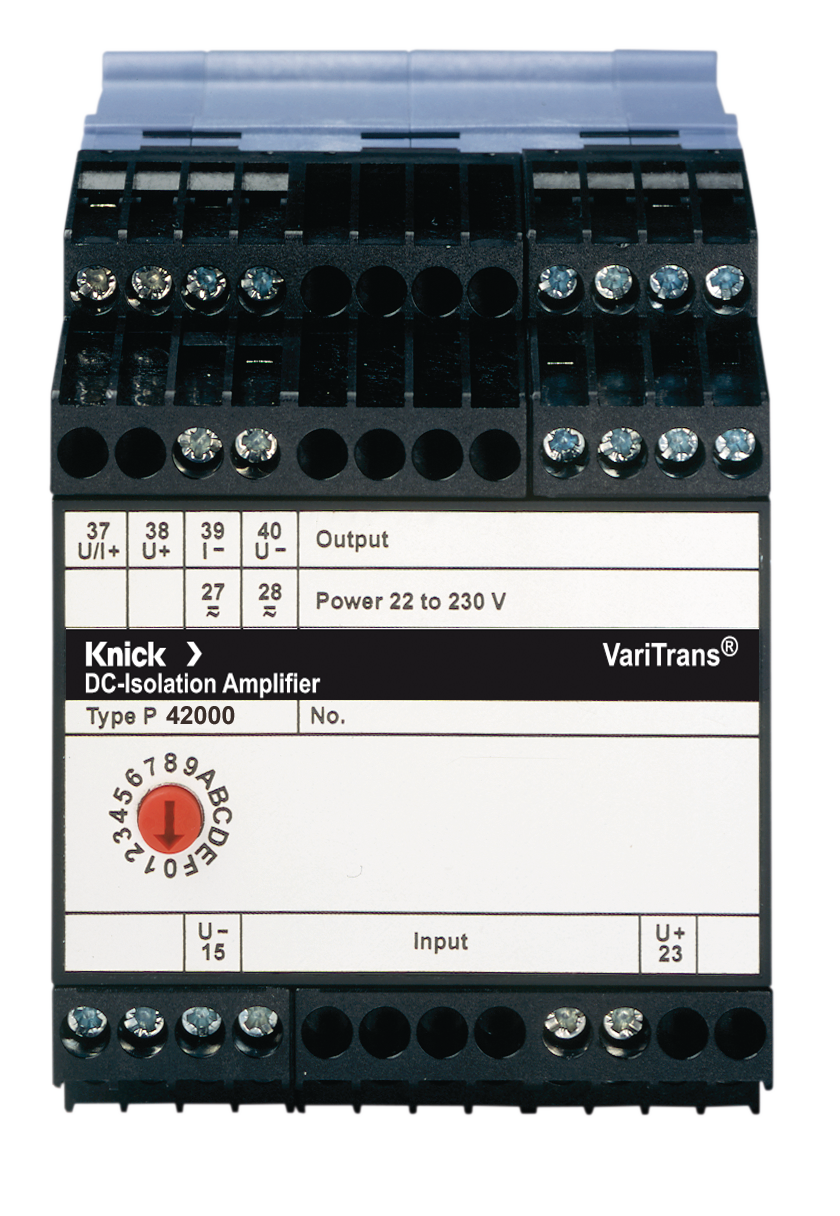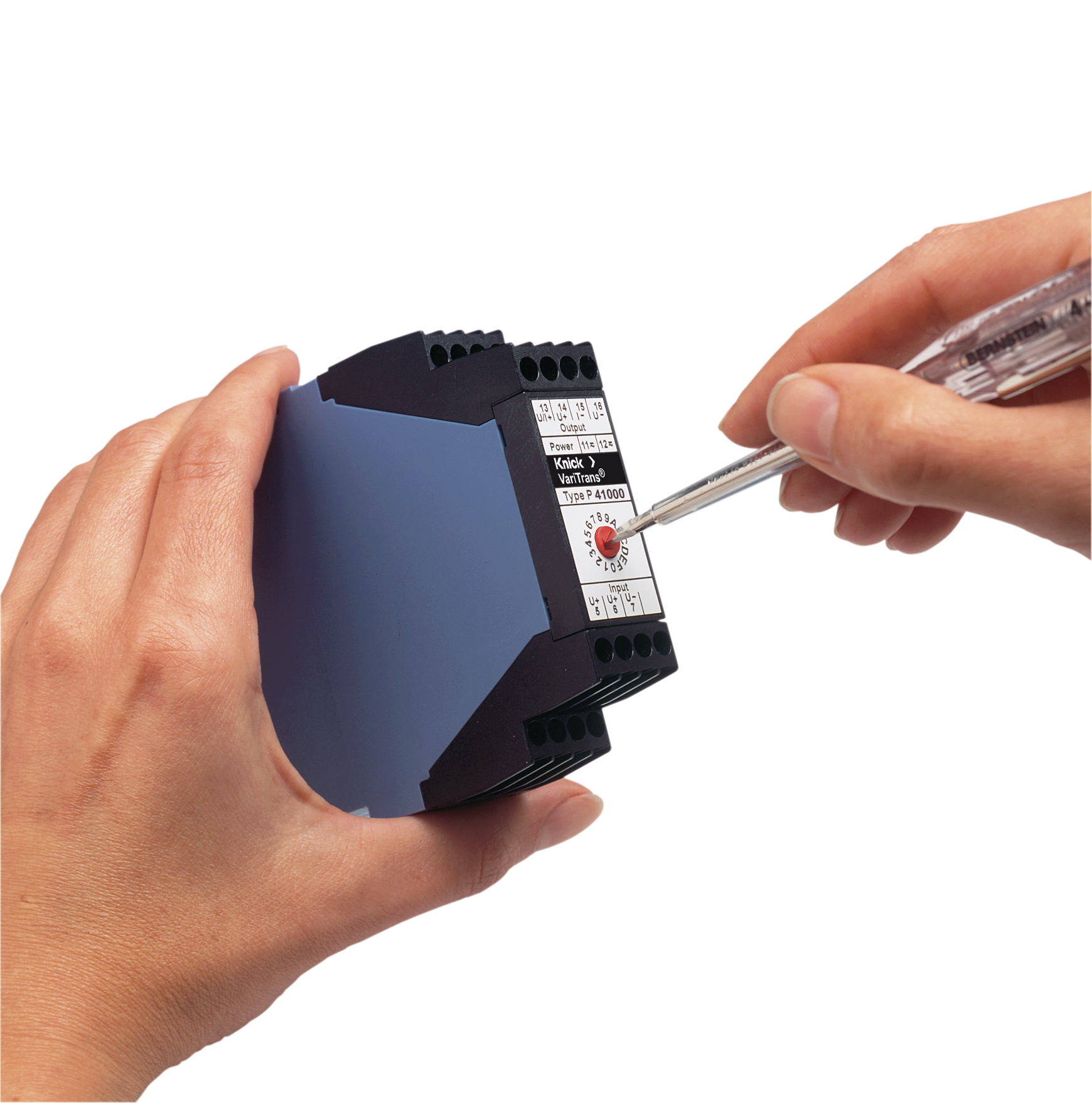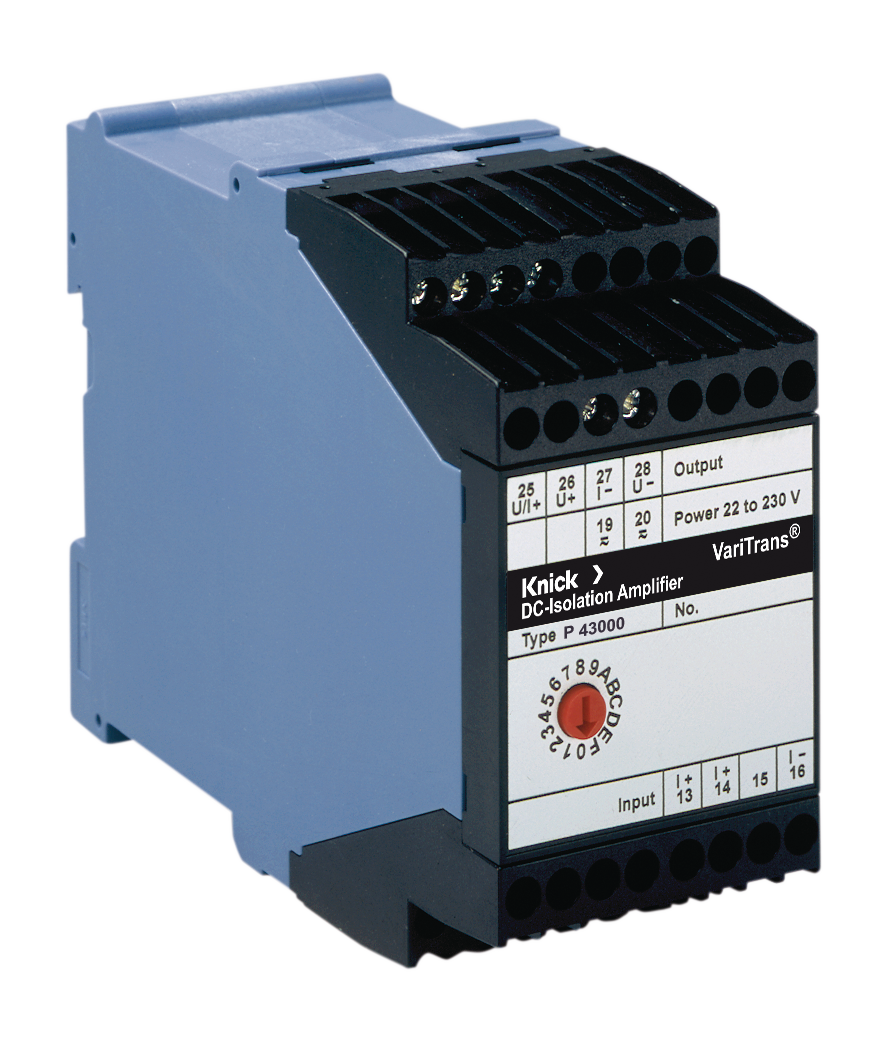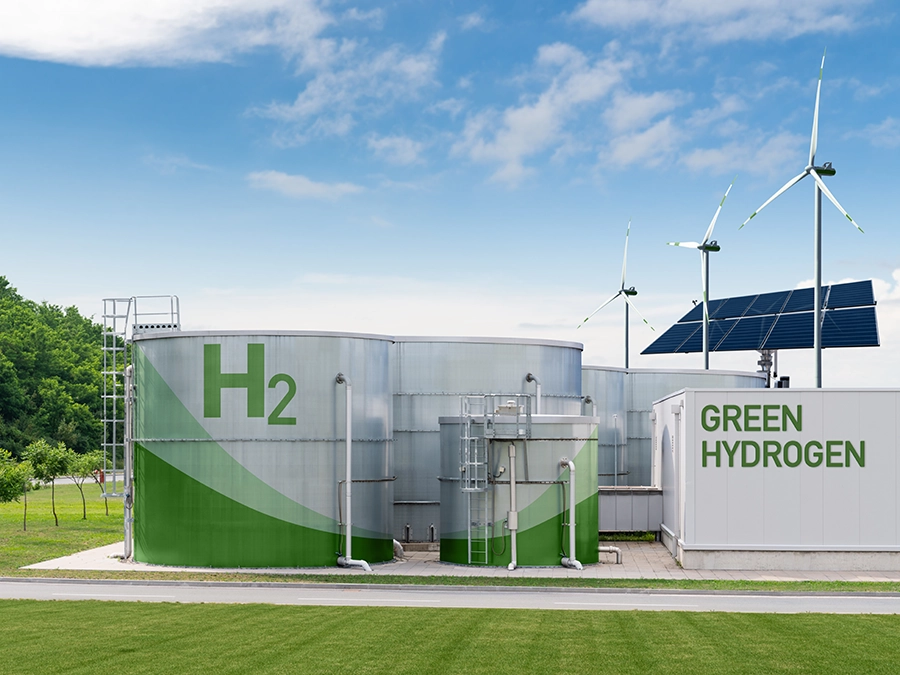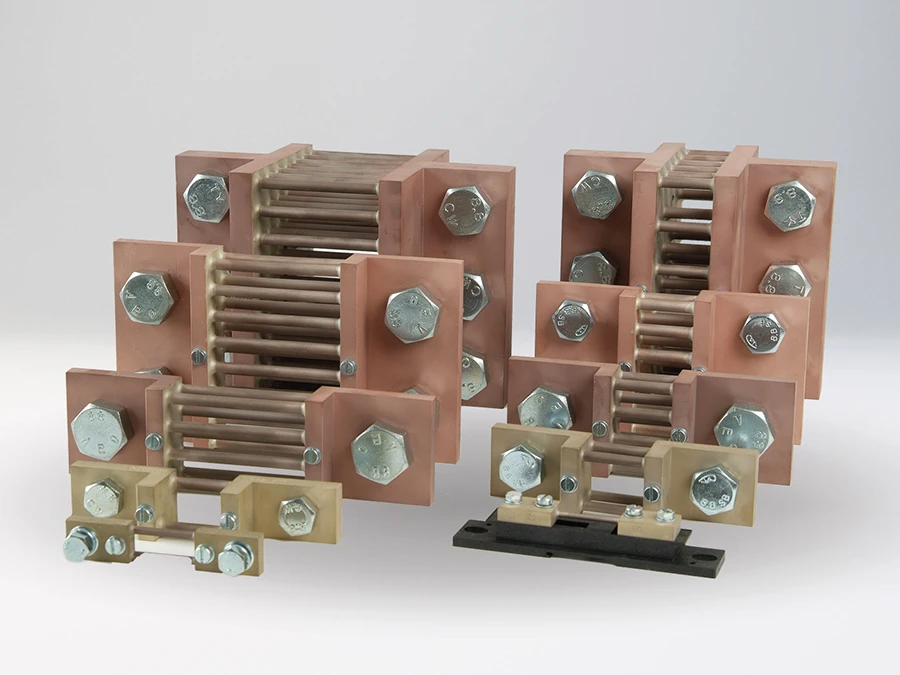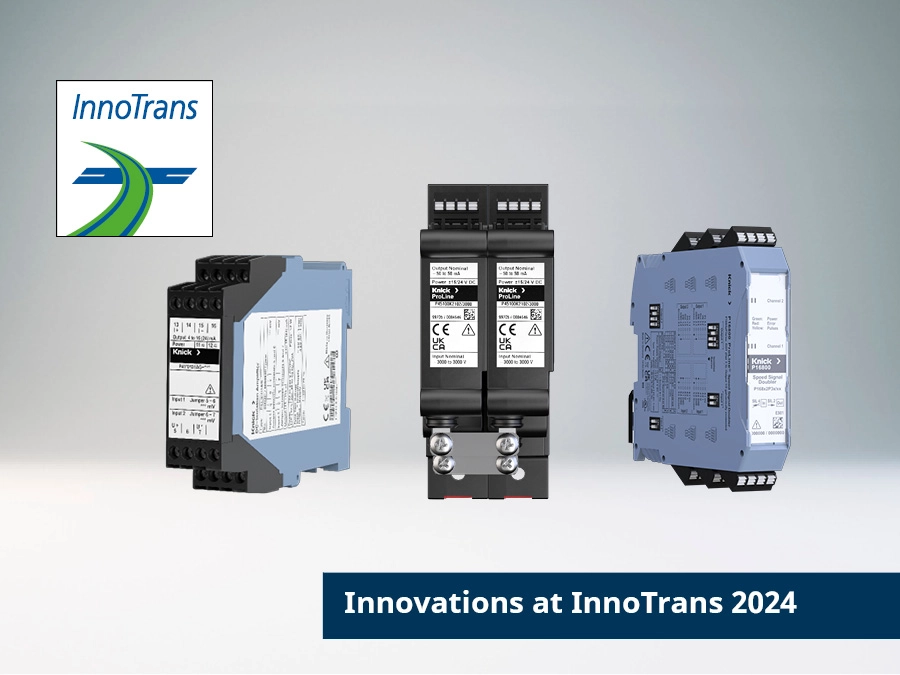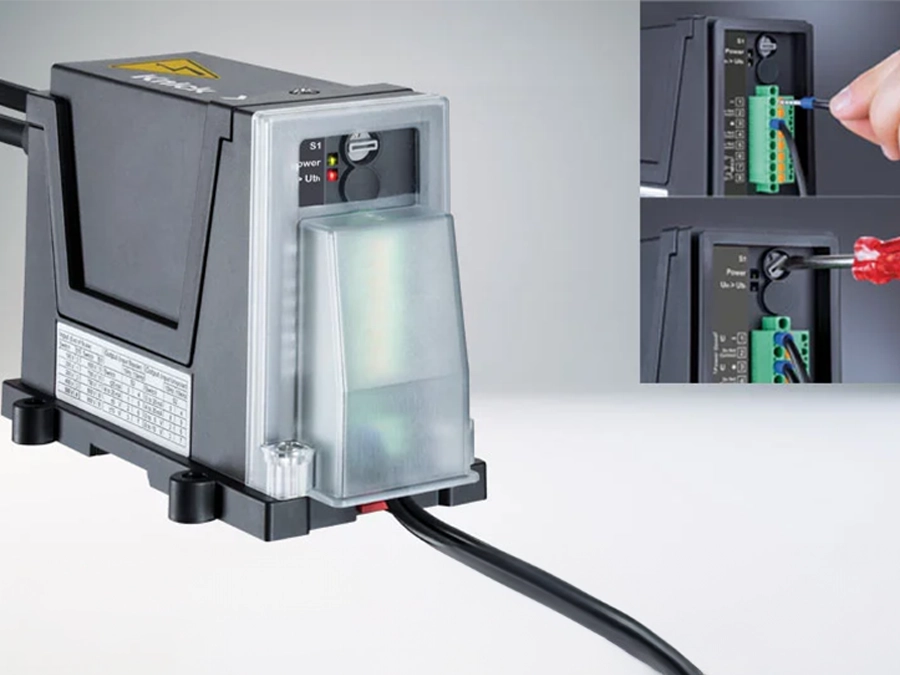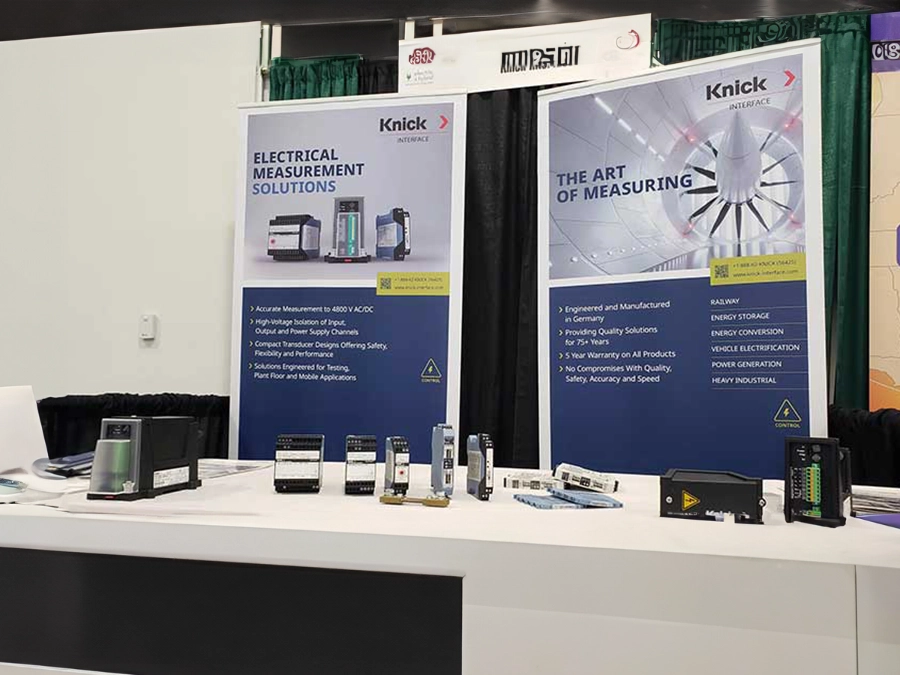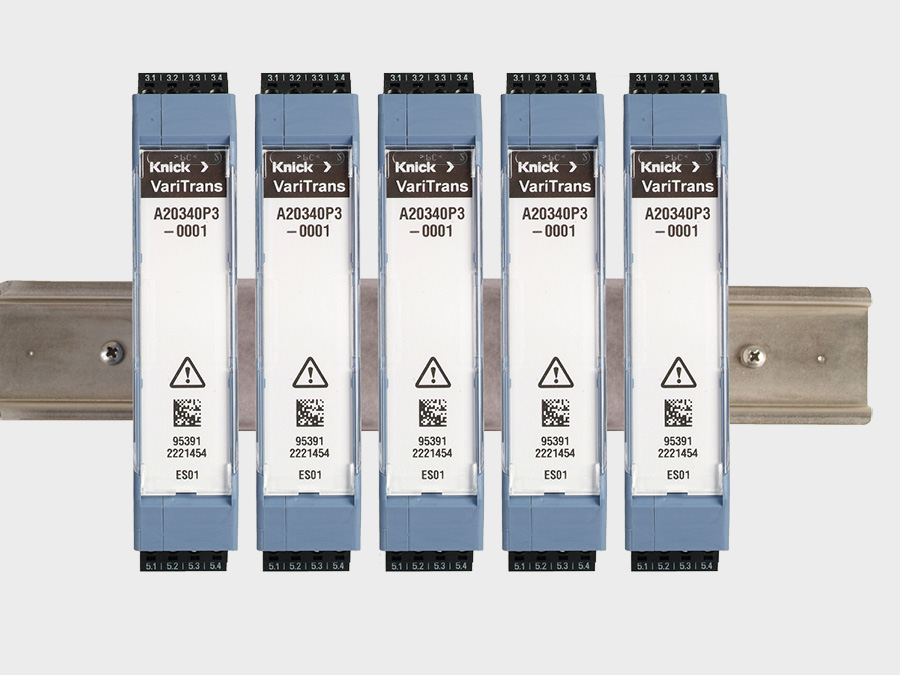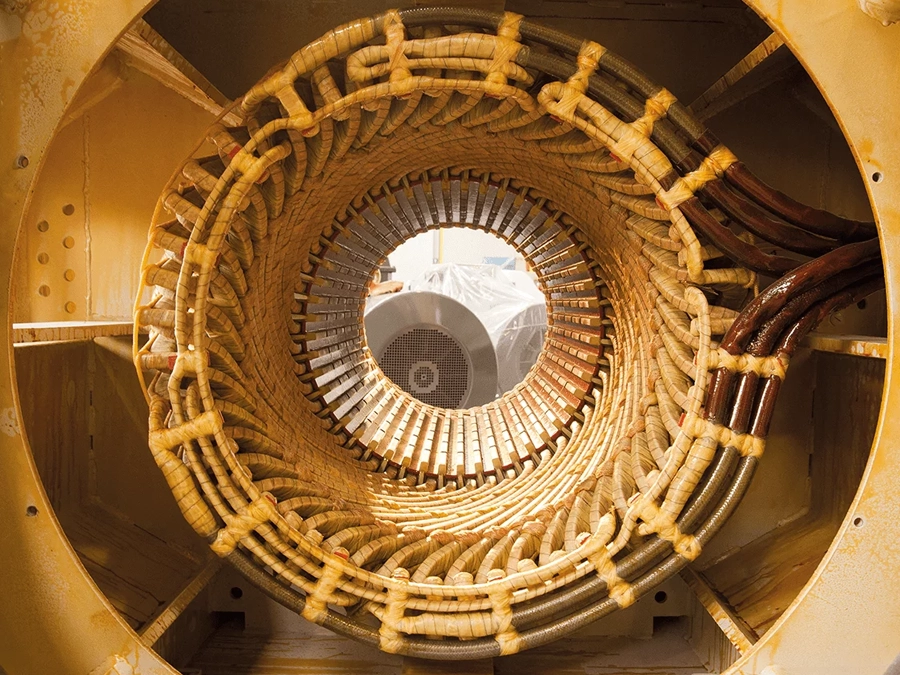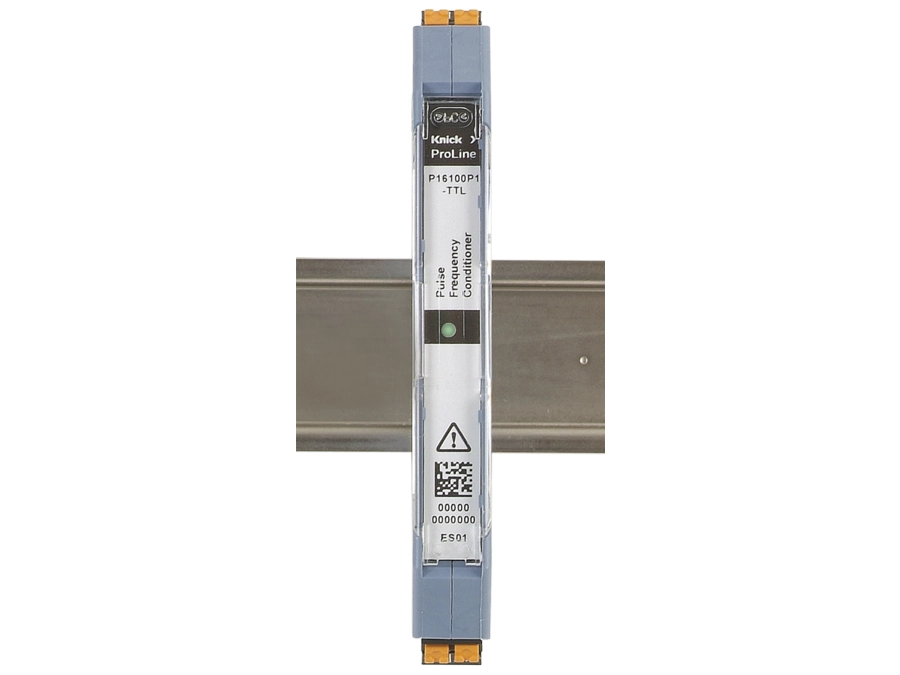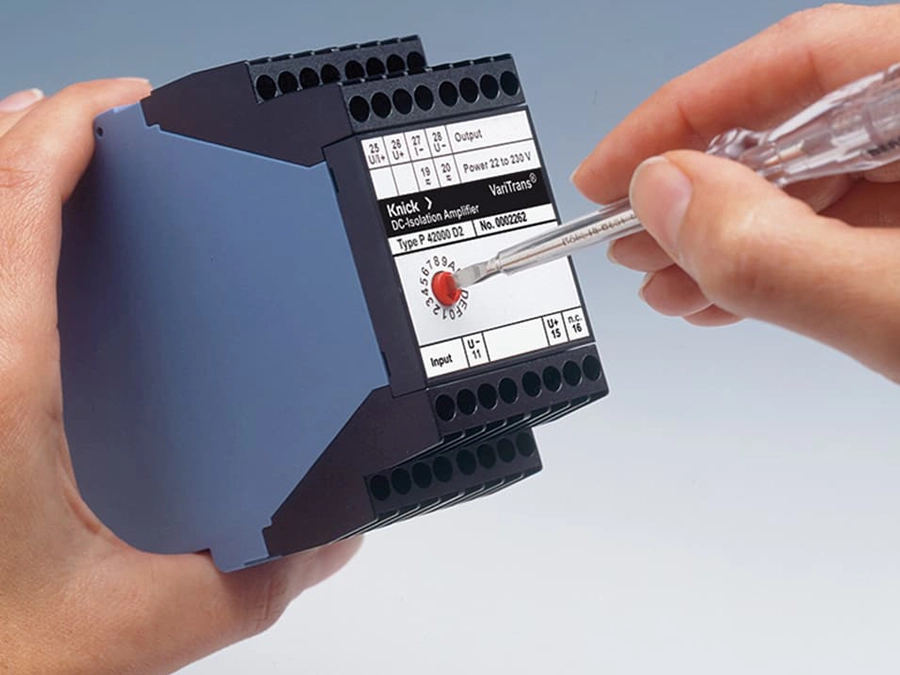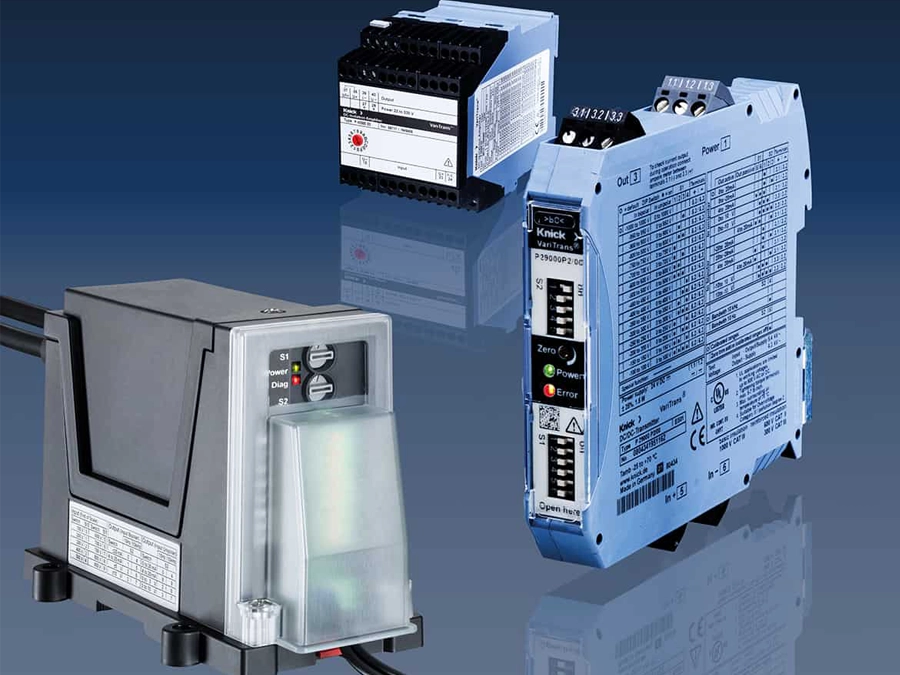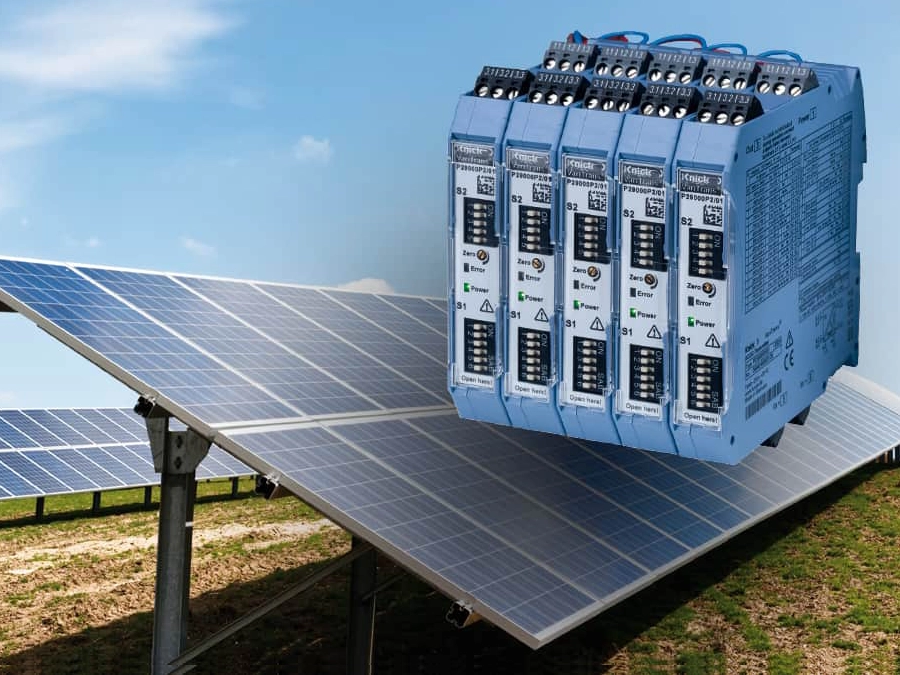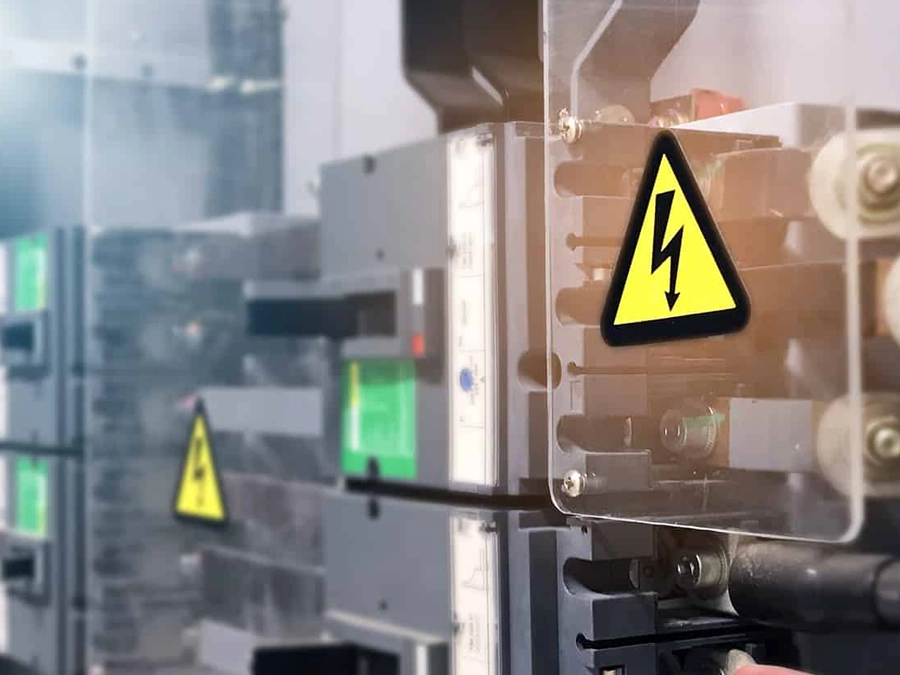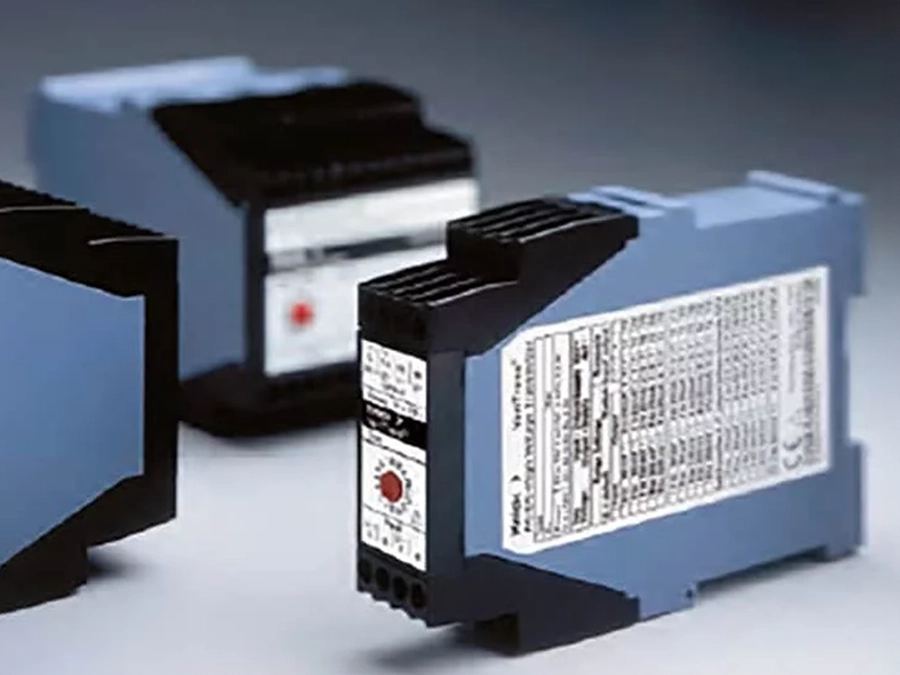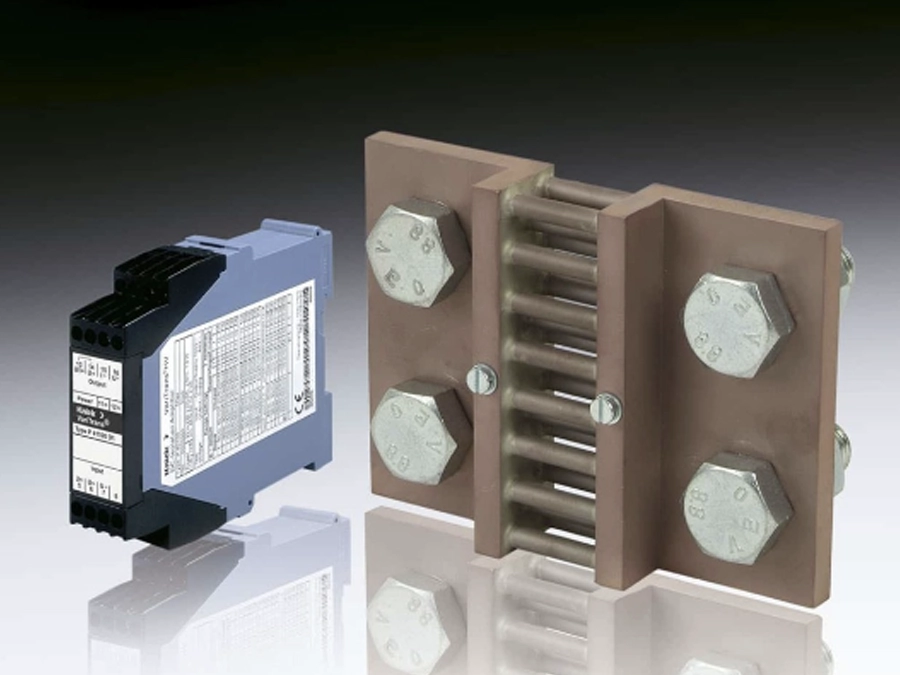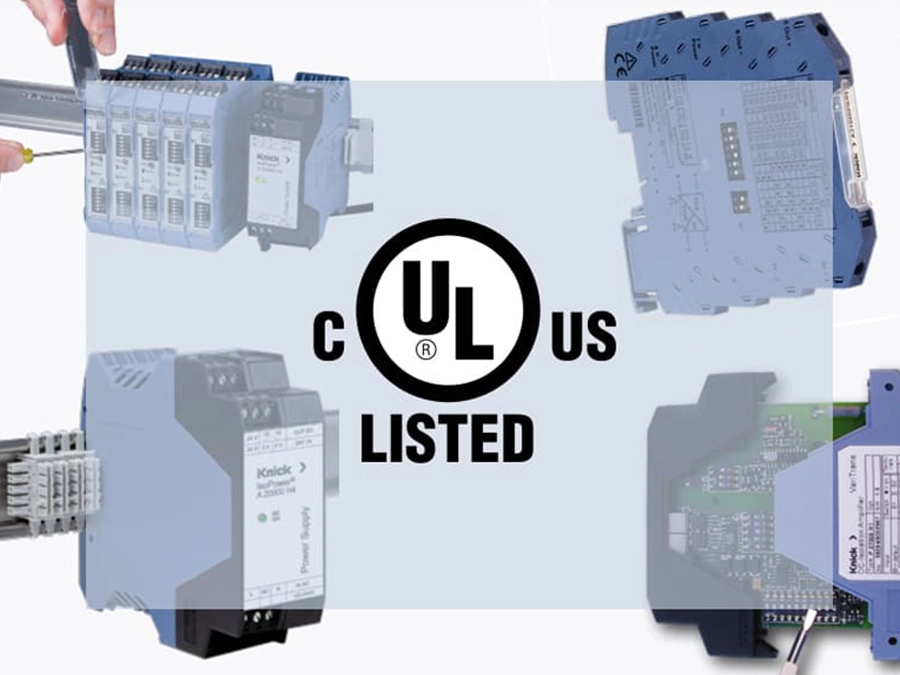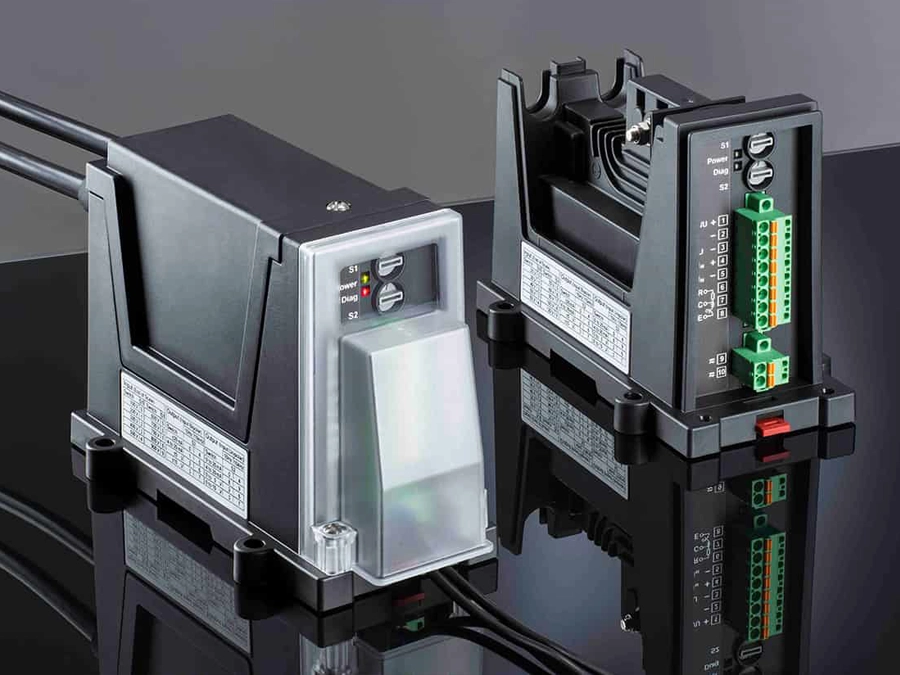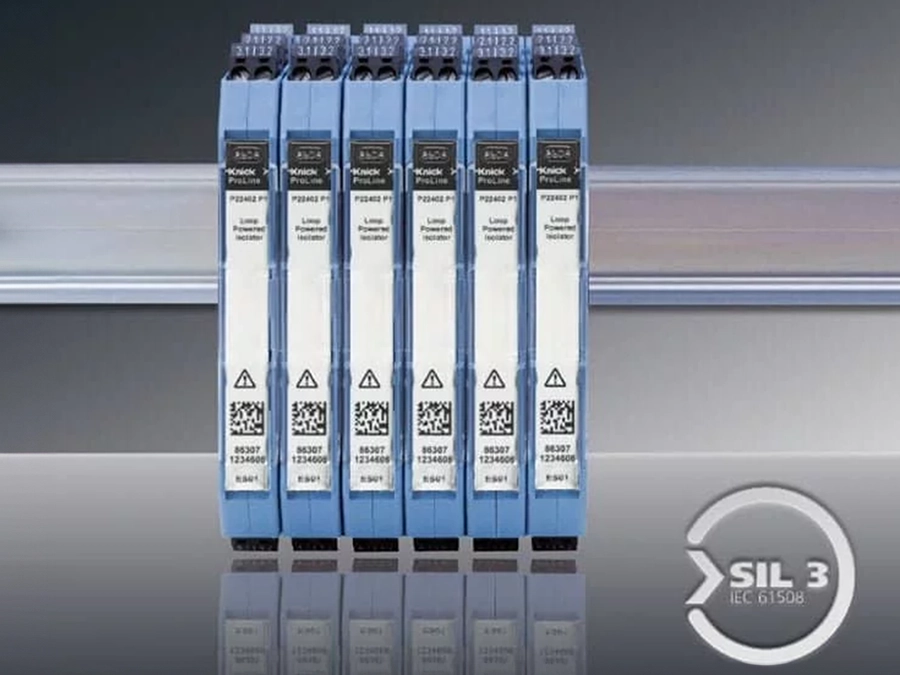P42000 High Voltage Transducer / Transmitter | Calibrated and Switchable
Product number:
P42000
Description
P42000 High Voltage Transducer / Transmitter | Calibrated and Switchable
Universal high voltage transducers. Input voltages up to Vin = ±3600 V.
- Universal high voltage transducers
for converting input voltages up to 3600 V AC/DC to impressed ±20 mA, ±10 V, or 4 ... 20 mA output signals - TransShield technology
enables extremely compact modular housings:- Working voltages up to 3600 V AC/DC with a housing width of 67.5 mm
- Working voltages up to 2200 V AC/DC with a housing width of 45 mm
- Protection against electric shock
with protective separation up to 1800 V AC/DC according to EN 61140 - Test voltages up to 15 kV AC
- Excellent transmission properties:
- Gain error < 0.3 %
- Cutoff frequency 5 kHz (low-pass filter / lower cutoff frequency on request)
- Rise time T90 approx. 110 µs
- Maximum accuracy
- Tremendous flexibility provided by
- Calibrated switching of up to 16 input/output ranges (working voltage up to 2200 V)
- Up to 16 customer-specific measuring ranges
- 20 V to 253 V AC/DC broad-range power supply
- Reliable function
even with unstable power supply - No damage
in the case of erroneous power connection - Switchable models
minimize required device variants and save stockkeeping costs - Suitable for DC railway systems
up to 3000 V DC - Mechanically stable
for operation on ships, rail vehicles and land crafts - 5-year warranty
The P42000 isolation amplifiers have been specially conceived for measuring high voltages up to 3600 V (DC). They reliably isolate high potentials at the input circuit.
The isolating distances are designed to withstand permanent voltages up to 3600 V AC/DC and fast transients up to 20 kV. Protection against electric shock is achieved through protective separation according to EN 61140 between input and output and power supply.
We look forward to hearing from you!
Contact Us
| Function: | High voltage measurement |
|---|---|
| Input: | 0 ... (±)100 V up to 0 ... (±)3600 V |
| Output: | 0 ... (±)10 V, 0 ... (±)20 mA, 4 ... 20 mA |
| Isolation AC/DC: | 2,200 V, up to 3,600 V |
| Test Voltage: | 10/15 kV AC |
| Power Supply: | 22 ... 230 V AC/DC |
| Cutoff Frequency: | Cutoff frequency 5 kHz, lower cutoff frequency on request |
| Ambient operating temperature: | –10 ... 70 °C |
| Dimensions (W x L x H): | 45 x 90 x 118 mm (D2), 67.5 x 90 x 118 mm (D3) |
| Special features: | Exceptionally high MTBF of 2165 years (Mean Time Between Failures), based on field data, High isolation in a compact housing, Switchable (16 input/output signal combinations) or customized versions |
| Standards: | EN 61140 |
| Product Category: | High Voltage Transducer |


